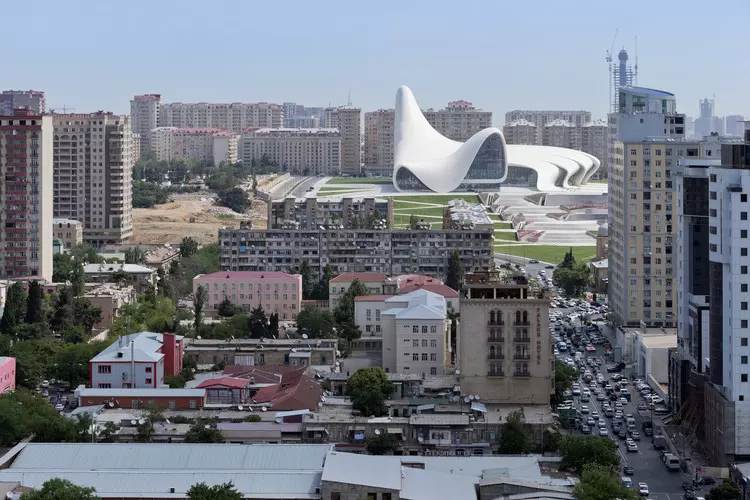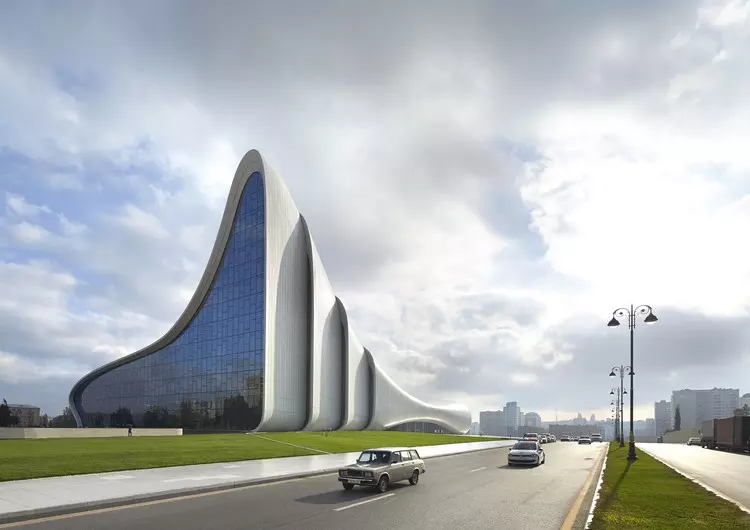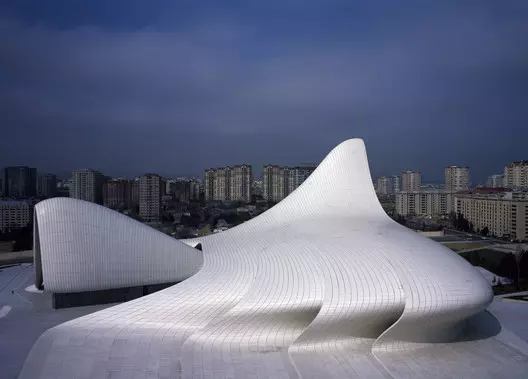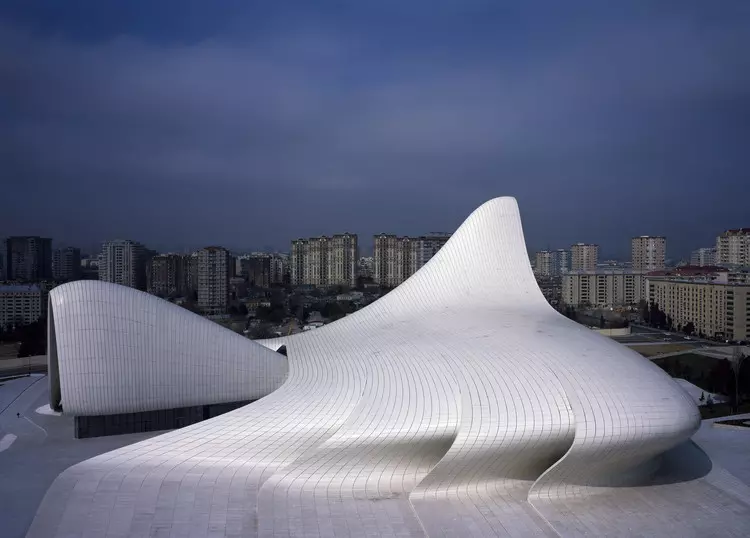 Image: Heydar Aliyev Center / Zaha Hadid Architects - Image 1 of 52. © Iwan Baan
Image: Heydar Aliyev Center / Zaha Hadid Architects - Image 1 of 52. © Iwan Baan
The Heydar Aliyev Center, designed by Zaha Hadid Architects, is an architectural marvel that stands proud in Baku, the capital of Azerbaijan. This iconic building breaks free from the imposing Soviet architectural style that once dominated the city, instead embracing the essence of Azeri culture and the nation's optimistic vision for the future.
An architectural transformation
Since gaining independence in 1991, Azerbaijan has dedicated itself to modernizing Baku's infrastructure and architecture, moving away from the Soviet legacy. The Heydar Aliyev Center is a testament to this transformation, representing the nation's commitment to cultural progress.
 Image: Heydar Aliyev Center / Zaha Hadid Architects - Image 18 of 52. © Iwan Baan
Image: Heydar Aliyev Center / Zaha Hadid Architects - Image 18 of 52. © Iwan Baan
A fluid connection
The design of the Heydar Aliyev Center establishes a seamless relationship between its surrounding plaza and the interior of the building. The plaza, accessible to all, intertwines with the building's interior to create a series of event spaces dedicated to celebrating both contemporary and traditional Azeri culture. This architectural landscape blurs the boundaries between the building and the urban environment.
 Image: Heydar Aliyev Center / Zaha Hadid Architects - Image 16 of 52. © Hufton+Crow
Image: Heydar Aliyev Center / Zaha Hadid Architects - Image 16 of 52. © Hufton+Crow
Embracing historical influences
The Heydar Aliyev Center draws inspiration from the region's rich architectural heritage. Just like in historical Islamic architecture, where elements flow into one another, the Center's design aims to establish a non-hierarchical space. It pays homage to the past while offering a contemporary interpretation that reflects a nuanced understanding of Azeri culture.
 Image: Heydar Aliyev Center / Zaha Hadid Architects - Image 20 of 52. © Hufton+Crow
Image: Heydar Aliyev Center / Zaha Hadid Architects - Image 20 of 52. © Hufton+Crow
Cutting-edge design and materials
The Heydar Aliyev Center's architectural development posed significant challenges, specifically when it came to the building's skin. The goal was to create a surface so continuous that it appeared homogenous. Advanced computing enabled the collaboration and communication necessary to integrate various functions, construction logics, and technical systems seamlessly.
 Image: Heydar Aliyev Center / Zaha Hadid Architects - Image 30 of 52. © Helene Binet
Image: Heydar Aliyev Center / Zaha Hadid Architects - Image 30 of 52. © Helene Binet
The space frame system used in the Center's construction allowed for the realization of its free-form structure and saved significant time. The building's exterior cladding used Glass Fibre Reinforced Concrete (GFRC) and Glass Fibre Reinforced Polyester (GFRP), providing both plasticity and functionality to complement the design's fluidity.
 Image: Heydar Aliyev Center / Zaha Hadid Architects - Image 33 of 52. © Hufton+Crow
Image: Heydar Aliyev Center / Zaha Hadid Architects - Image 33 of 52. © Hufton+Crow
Illuminating the night
The lighting design of the Heydar Aliyev Center carefully considers the transition from day to night. During the day, the building reflects light, creating an ever-changing appearance. Semi-reflective glass offers tantalizing glimpses into the interior, provoking curiosity without revealing the full extent of the spaces within. At night, the lighting showcases the interior, blurring the boundaries between inside and outside.
 Image: Heydar Aliyev Center / Zaha Hadid Architects - Image 23 of 52. © Iwan Baan
Image: Heydar Aliyev Center / Zaha Hadid Architects - Image 23 of 52. © Iwan Baan
A vision for the future
The Heydar Aliyev Center's design is deeply rooted in the site's topography and the cultural landscape. By embracing the connections between the building's exterior and interior, it offers a glimpse into the future cultural possibilities for Azerbaijan.
 Image: Heydar Aliyev Center / Zaha Hadid Architects - Image 15 of 52. © Hufton+Crow
Image: Heydar Aliyev Center / Zaha Hadid Architects - Image 15 of 52. © Hufton+Crow
The Heydar Aliyev Center stands as a testament to Azerbaijan's commitment to cultural progress and architectural innovation. It not only reshapes the skyline of Baku but also reflects the nation's vibrant spirit and vision for the future.

















